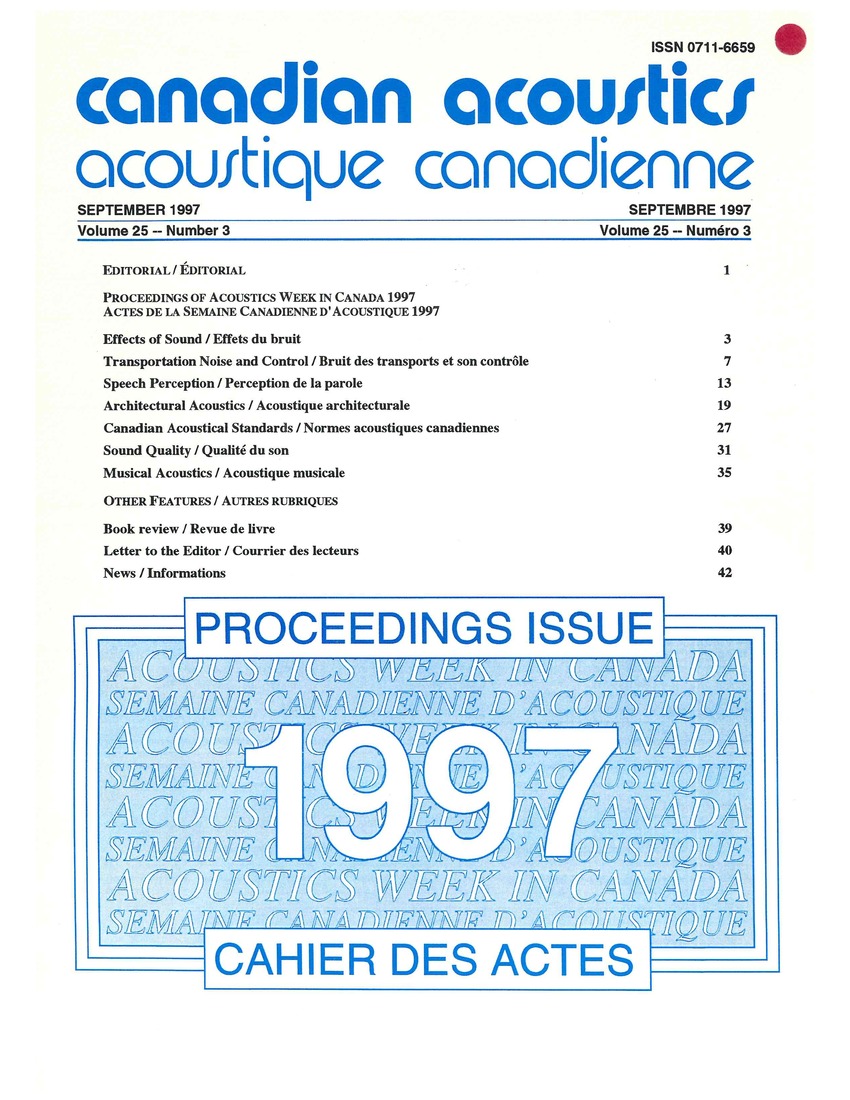Psychophysics of windnoise and sound quality engineering
Keywords:
Acoustic signal processing, Automobiles, Human engineering, Psychophysiology, Spectrum analysis, Wind effects, Psychophysics, Sound qualityAbstract
At relatively high speeds, windnoise becomes a dominant component in the interior of most automobiles and is often determined to be objectionable in customer evaluations. While subjective ratings improve when the loudness of the windnoise is reduced, it is not always possible to achieve such level reduction. The present paper addresses whether it is possible to improve the sound quality of the windnoise without altering its loudness, e.g., whether some shapes of windnoise spectra are preferred over others. To determine whether spectral shape affects the sound quality of windnoise, active sensory tuning (AST) was used [Sterian, Runkle, and Wakefield, Intl. Conf. Acoust. Speech and Sig. Proc., 1995]. This methodology, in general, allows listeners to efficiently and selectively adjust the parameters governing an acoustic signal to optimize along some subjective dimension. In the particular case, we chose spectral shape as the key attribute of our windnoise investigation, parameterized shape using an equalizer model, and asked listeners to judge candidate signals according to a preference criterion. A genetic-algorithm version of the AST procedure was implemented based on psychophysical studies of shape sensitivity. Results from these studies, the slope and shape quantization model, and preferred shapes will be presented and discussed in light of the controllable surfaces in windnoise generation. (Work supported by grants from the Ford Motor Company and the Office of Naval Research.).Additional Files
Published
How to Cite
Issue
Section
License
Author Licensing Addendum
This Licensing Addendum ("Addendum") is entered into between the undersigned Author(s) and Canadian Acoustics journal published by the Canadian Acoustical Association (hereinafter referred to as the "Publisher"). The Author(s) and the Publisher agree as follows:
-
Retained Rights: The Author(s) retain(s) the following rights:
- The right to reproduce, distribute, and publicly display the Work on the Author's personal website or the website of the Author's institution.
- The right to use the Work in the Author's teaching activities and presentations.
- The right to include the Work in a compilation for the Author's personal use, not for sale.
-
Grant of License: The Author(s) grant(s) to the Publisher a worldwide exclusive license to publish, reproduce, distribute, and display the Work in Canadian Acoustics and any other formats and media deemed appropriate by the Publisher.
-
Attribution: The Publisher agrees to include proper attribution to the Author(s) in all publications and reproductions of the Work.
-
No Conflict: This Addendum is intended to be in harmony with, and not in conflict with, the terms and conditions of the original agreement entered into between the Author(s) and the Publisher.
-
Copyright Clause: Copyright on articles is held by the Author(s). The corresponding Author has the right to grant on behalf of all Authors and does grant on behalf of all Authors, a worldwide exclusive license to the Publisher and its licensees in perpetuity, in all forms, formats, and media (whether known now or created in the future), including but not limited to the rights to publish, reproduce, distribute, display, store, translate, create adaptations, reprints, include within collections, and create summaries, extracts, and/or abstracts of the Contribution.


